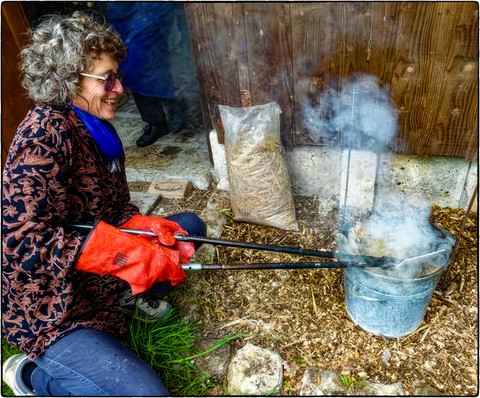The Technic
Raku

Raku firing originated with the Buddhist tea ceremony. Buddhism arrived in Japan from China in the XII century. The Buddhists monks held tea rituals and by the XVI century tea ceremonies were practiced by various social classes: aristocrats, warriors, samurai etc.
There are two Raku styles: the red raku fired at 800°C a low temperature, and black Raku fired at 1200°C. For the red raku the bowls are slipped with red ochre and bisque fired in a wood or charcoal kilns, the reduction producing the cloudy grey effect.
The glaze is transparent and thick. The black raku pottery is bisque fired; the pieces are then glazed with a thick glaze containing iron and manganese. . Before the firing the glazed pieces are dried on top of the kiln, and then fired for about one hour. When the required temperature is reached with the use of thongs, the bowls are lifted out of the lighted kiln and cooled down quickly to produce a crackled effect on the glaze. The bowls are then ready to serve the tea.
In West the technical Raku has been discovered in the beginning of the century by potters as Bernard Leach that described his/her/its experience in " Le delivers the potier ".
It is Paul Soldner that developed the technique in the United States and that invented the reduction of the enamel after the exit of the oven. It is the beginning of the modern Raku that only took the importance in Europe these last years.
The development of firing in the West.
The bisque fired pots are glazed and fired quickly up to around 1000°C. When the glaze is melted the pieces are taken out of the kiln with the aid of tongs and placed into a bed of woodchips, straw and dry leaves where they are smoked. The reduction firing has as a chemical effect on the colour of the glazes: metal oxides copper and silver introduced into the glaze develop metal colours, and lustres which change in the light. The play between oxidation and reduction creates the possibility of a variety of colours. A fast cooling creates a crackled effect. The black soot is then washed off the surface of the pieces. The clay, the glaze and fire are all the essence of raku. Nothing is ever repeated and there are an infinite number of possibilities